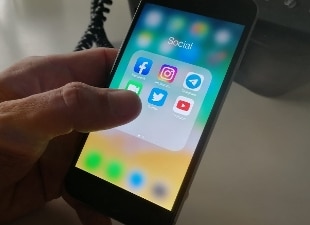- Internet, Prime Minister Conte: "Self-regulation is not enough, it must be governed"
- UN: 53.6% of the planet's inhabitants use the internet
Share
December 18, 2019 More than one family out of two has no Internet because they cannot use it. This is what emerges from the 2019 report "Cittadini e Ict" published by Istat. Most families without access to the Internet at home indicate the lack of capacity as the main reason (56.4%) and 25.5% do not consider the Internet a useful and interesting tool.Economic reasons related to the high cost of the necessary links or tools follow (13.8%), while 9.2% do not surf the Net from home because at least one member of the family accesses the Internet from another place.
A strong digital divide remains among families
Among families, a strong digital divide remains, mainly due to generational and cultural factors. Almost all families with at least one minor have a broadband connection (95.1%); among families made up exclusively of people over sixty-five this share drops to 34%. Another discriminating factor is the educational qualification; 94.1% of families with at least one graduate member have a broadband connection, compared to 46.1% of those in which the highest educational qualification is at most the middle school.
Almost 72% of men use the internet compared to 64% of women
The use of the Internet is still characterized by a gender gap in favor of men (71.7% against 64.2% of women) which remains stable compared to the previous year. However, up to the age of 44, these differences are very limited and cancel out among young people up to the age of 19
Internet usage increases but 41.6% have low digital skills
In 2019, 29.1% of internet users aged 16-74 have high digital skills. The majority of Internet users has low skills (41.6%) or basic skills (25.8%). Furthermore, there is a niche of internet users that has no digital competence (3.4%, equal to 1 million and 135 thousand).
Age remains an important but not decisive factor
Age remains an important but not decisive factor: young people aged 20-24 have advanced skill levels in 45.1% of cases. Another discriminating factor is the level of education, even if just over half of the graduates who use the Internet have high digital skills (52.3%). If we analyze the four dimensions on the basis of which the composite indicator is calculated, it emerges that Internet users have more advanced digital skills for e-skills related to the communication domain (72.3%) and information (61.8% ) compared to those linked to the ability to solve problems (49.8%) and to use software to treat / transmit digital content (42.6%). Moreover, only for the "communication" domain some gaps are canceled, as for the one linked to gender and territory.
There is still a gap between the Center-North and the South
The Istat analysis also shows the persistence of the gap between Center-North and Southern Italy in broadband access. Differences are also found between municipalities of different demographic amplitude: in the metropolitan areas access rates to broadband reach 78.1% while in the municipalities up to 2 thousand inhabitants this share drops to 68 percent.
More than half of Internet users aged 14 and over have purchased online (57.2%, or 20 million 403 thousand people); in particular, 36.1% ordered or bought goods or services in the last 3 months, 12.1% during the year and 9.0% more than a year ago.
More than half of internet users shop online
They are more likely to buy men (60.8%), young people between 20 and 34 (71.3%) and residents in the North (60.6%) online. Among internet users who made purchases in the last 3 months, 48.3% made one or two orders, 28.8% between three and five, 10.0% between six and ten, while only a small share claims to having made more than ten orders (6.1%). The most purchased goods are clothes and sporting goods (45.3%), household items (41.6%) and services relating to "travel and transportation" (40.1%).

